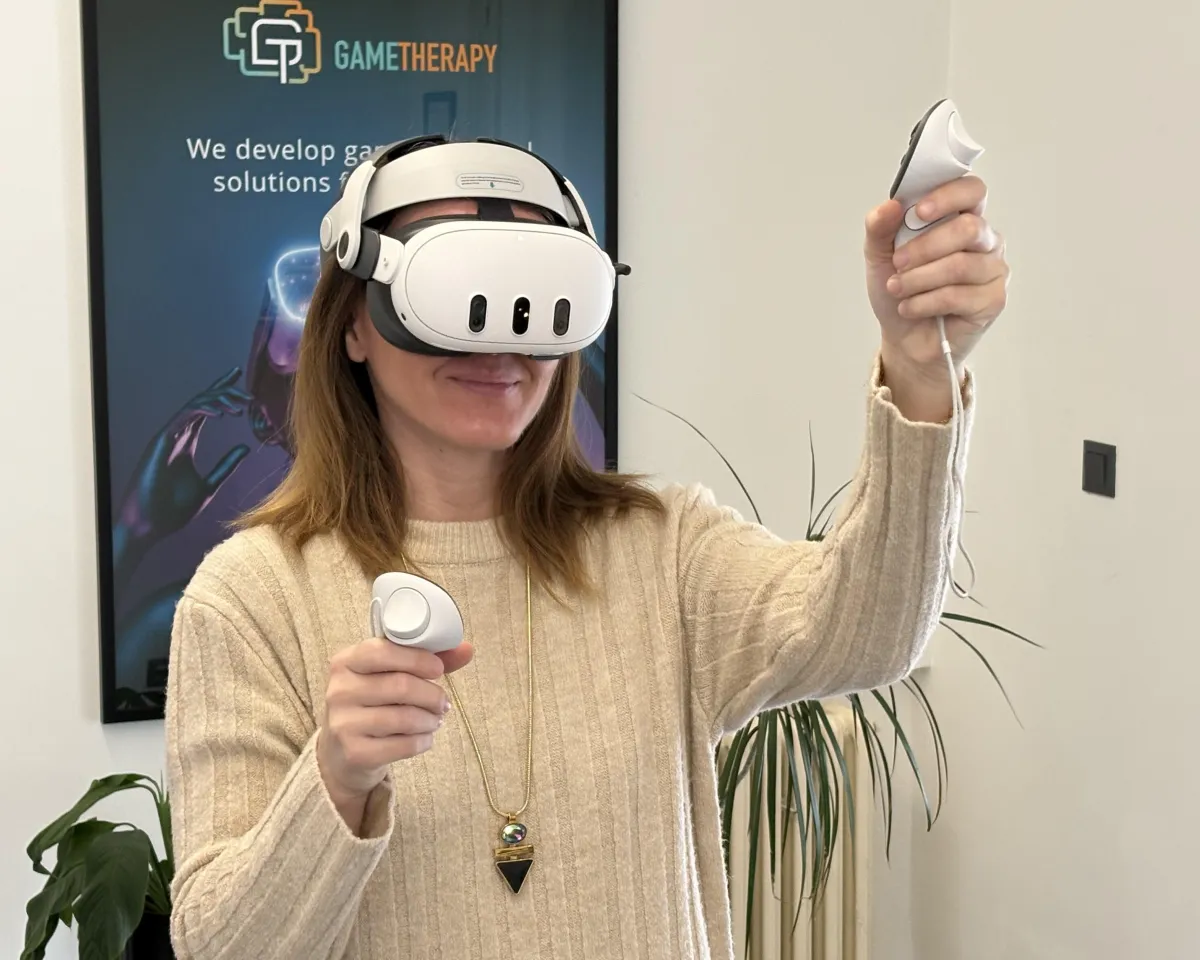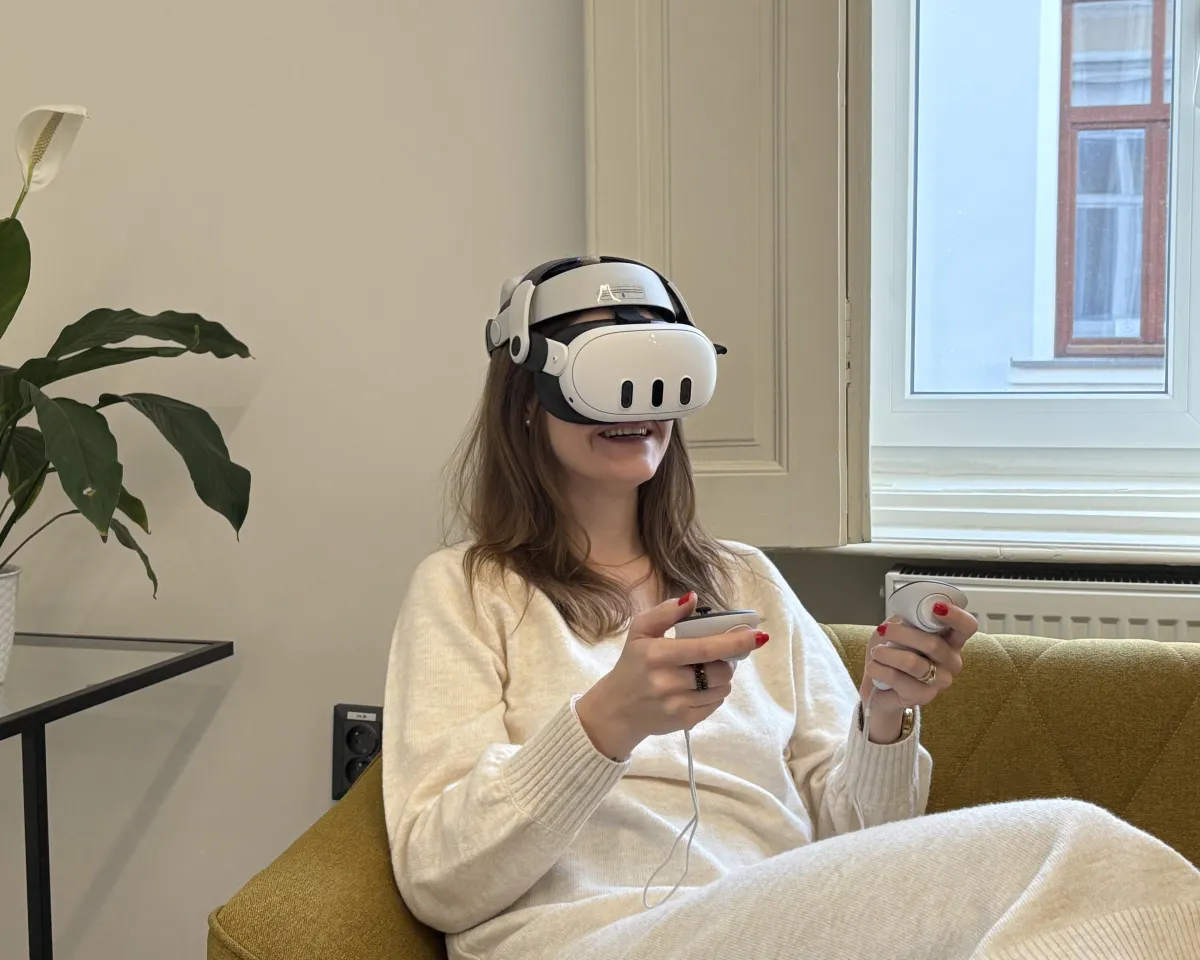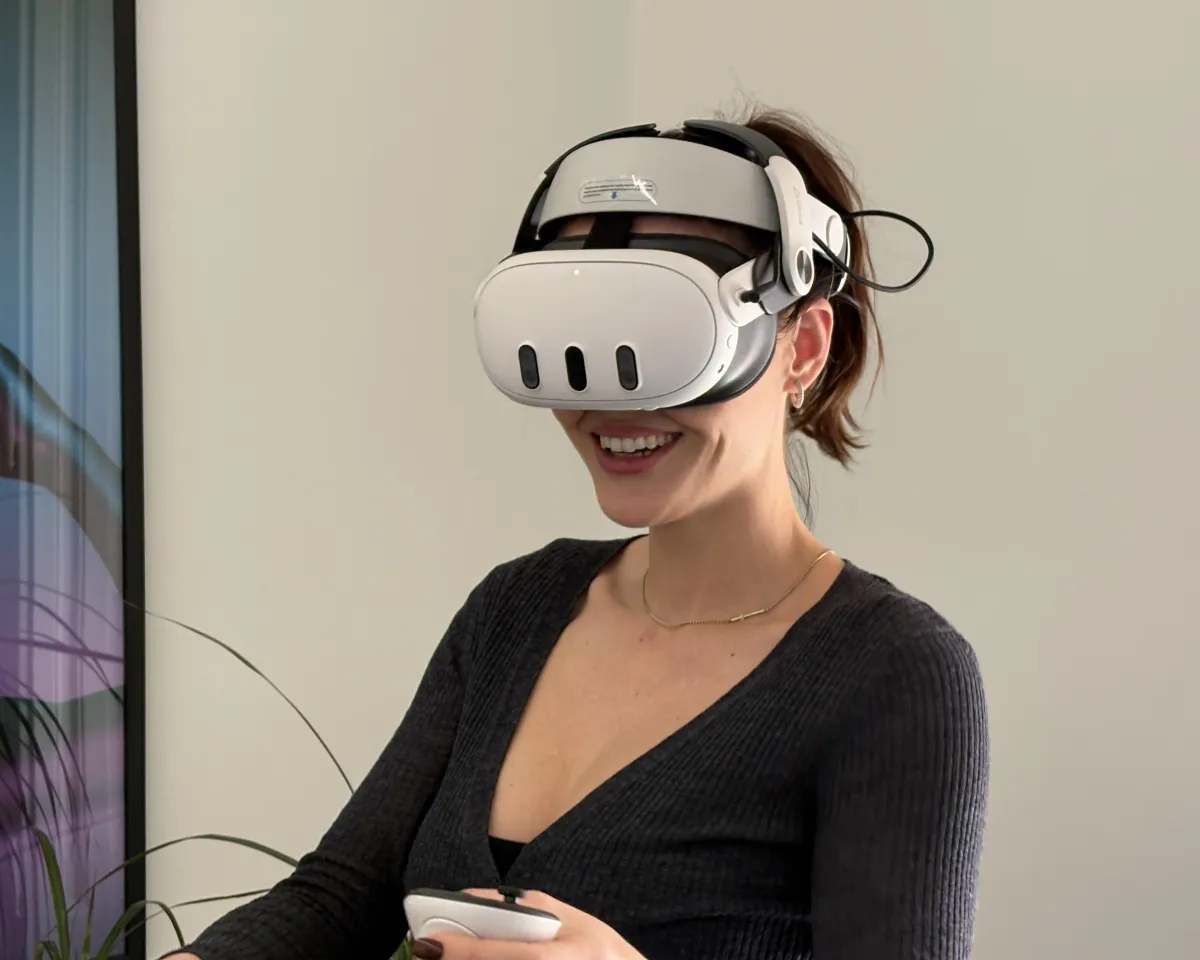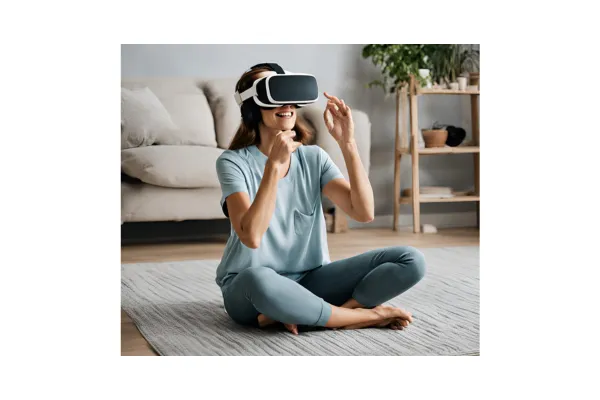BRIDGING RESEARCH, TECHNOLOGY, AND THE GAMING WORLD
Your partner in cutting-edge software development
Our mission is to transform human well-being and human-computer interaction. We do this by integrating virtual reality, augmented reality, and artificial intelligence technologies. At the heart of our philosophy is game-therapy. We create innovative, scientifically grounded, yet playful solutions for a wide range of challenges.

IMPACTFUL TOOLS FOR A BETTER QUALITY OF LIFE
Our products
ClaustrOFF
A game created with cutting-edge research to help you overcome fears in a safe, engaging, and effective way
NeuroBoostVR
Innovative exercises for seniors and others to improve motor skills, balance, and orientation with simple, effective activities
VIRADIA
Virtual Reality Platform for Early Diagnosis of Neurodegenerative Diseases, Revolutionizing Neurological Diagnostics
Experience the full power of VR for positive well-being
With a commitment to innovation and the transformative power of VR, we aim to make a lasting impact on mental health, education, industry, and personal growth, all grounded in scientific research and designed to enhance well-being worldwide.

GROWTH THROUGH INNOVATIONS
The GAMETHERAPY model
We harness the power of new technologies. By making care and training more accessible and tailored, we empower individuals and organizations to thrive. Rooted in scientific research, our innovative approach drives meaningful change, transforming mental health, education, healthcare, industry, and personal growth on a global scale.
SOLUTIONS THAT MAKE AN IMPACT
Immersive solutions for mental health and beyond
Our primary focus is on creating immersive applications that empower individuals to overcome challenges like anxiety, phobias, and neurological conditions. These solutions are designed to enhance well-being and unlock potential across various aspects of life, showcasing our expertise in innovative and impactful technologies.
Engaging VR/AR solutions for soft skills training
Evaluation in neurology and rehabilitation
General education
Personal development
Industrial training
Industry 5.0 applications

Join the Mind Heaven Community!
Be part of our journey to transform mental health care and well-being through innovation and gamification. By signing up, you’ll gain access to exclusive psychological content, enjoy discounts on our products, and stay updated with the latest news about our projects. You’ll also discover unique content like game stories and behind-the-scenes insights into our app development process. We value your ideas and feedback to make our games even better. Join us, become a co-creator, and help shape the future of the Mind Heaven Community!

How VR Exposure Therapy Can Help Treat Claustrophobia
How VR Exposure Therapy Can Help Treat Claustrophobia

"Virtual Reality is revolutionizing mental health treatment, providing safe, immersive environments where individuals can confront and overcome their fears." – Dr. Martin Polák
Claustrophobia, the intense fear of confined spaces, can make daily life challenging, from avoiding elevators to experiencing panic on crowded public transport. Traditional therapies like Cognitive Behavioral Therapy (CBT) and exposure therapy have long been effective in treating this phobia. Now, Virtual Reality (VR) is transforming how we approach exposure therapy, offering a controlled, customizable, and engaging way to help individuals manage their fears.
This article explores how VR exposure therapy works, its benefits, and why it’s becoming a game-changer for treating claustrophobia.
What is VR Exposure Therapy?
An Overview of Exposure Therapy
Exposure therapy involves gradually confronting fears in controlled environments, allowing individuals to desensitize themselves to anxiety-provoking stimuli over time. For claustrophobia, this might mean stepping into a confined space like a small room or an elevator.
How VR Enhances Exposure Therapy
Virtual Reality brings exposure therapy into a digital realm, creating realistic simulations of anxiety-inducing scenarios. With a VR headset, users can navigate virtual environments such as:
Elevators
Crowded trains
Airplane cabins
Tunnels or small rooms
VR exposure therapy combines the effectiveness of traditional exposure methods with the added benefits of customization, safety, and convenience.
Benefits of VR Exposure Therapy for Claustrophobia
1. A Safe and Controlled Environment
VR allows users to face their fears without real-world risks. Therapists can pause or adjust scenarios at any time, ensuring a comfortable pace for the individual.
2. Realistic Simulations
High-quality graphics and sound create lifelike environments, helping users immerse themselves fully. This immersion mimics real-life situations, making the therapy highly effective.
3. Gradual Desensitization
Therapists can start with less intimidating scenarios and gradually increase the difficulty as the user becomes more confident. For example:
Begin with a spacious virtual elevator.
Progress to a smaller, more crowded elevator.
4. Cost and Time Efficiency
VR eliminates the need for in-person exposure trips, such as traveling to a busy train station or airport. Therapy sessions can occur in a single location, saving time and resources.
5. Data-Driven Insights
Many VR systems track heart rate, gaze, and other metrics during sessions. This data helps therapists measure progress and tailor future sessions to the user’s needs.
How VR Exposure Therapy Works
Step 1: Initial Assessment
A therapist assesses the severity of the claustrophobia and designs a personalized treatment plan. This includes selecting specific scenarios to target the individual’s fears.
Step 2: Gradual Immersion
Users begin their VR journey with less threatening scenarios. For example:
Viewing a confined space from a distance.
Slowly moving closer to the space over multiple sessions.
Step 3: Real-Time Guidance
During the VR session, a therapist provides guidance and support. They might encourage breathing exercises or cognitive reframing techniques to manage anxiety.
Step 4: Tracking Progress
Progress is measured through self-reported anxiety levels and physiological data collected during sessions. Adjustments are made to ensure continuous improvement.
Step 5: Real-World Application
As users gain confidence in VR, they are encouraged to apply these skills in real-life situations, such as entering an actual elevator or crowded space.
Why VR is a Game-Changer for Claustrophobia
Accessibility
VR makes therapy accessible to more people, particularly those who live far from specialized treatment centers.
Engagement
The interactive and immersive nature of VR keeps users engaged, making therapy feel less daunting and more achievable.
Customization
Scenarios can be tailored to the user’s specific fears. For instance, if an individual struggles with being trapped in a crowded elevator, the VR environment can replicate this exact situation.
Efficacy
Studies published in the Journal of Anxiety Disorders (2023) show that VR exposure therapy is as effective as traditional exposure methods, with added convenience and higher patient satisfaction.
Real-Life Success Stories
Sarah’s Journey with VR Therapy
Sarah avoided elevators for over a decade due to claustrophobia. After six VR sessions, she felt confident enough to use an elevator in her workplace, something she never thought possible.Mark’s Transformation
Mark’s fear of airplane cabins limited his travel. VR therapy allowed him to virtually “fly” multiple times before stepping onto a real plane. Today, he travels for work without hesitation.
Tips for Getting Started with VR Exposure Therapy
Choose a Licensed Therapist: Look for professionals trained in VR therapy to ensure safe and effective treatment.
Stay Consistent: Regular sessions yield the best results, so commit to a schedule.
Practice Coping Techniques: Pair VR sessions with breathing exercises, mindfulness, or CBT to maximize progress.
Track Your Growth: Keep a journal of your experiences to reflect on your improvements and milestones.
The Future of VR Therapy for Phobias
As technology advances, VR therapy continues to evolve. Emerging features like haptic feedback (physical sensations) and AI-driven customization promise even more effective treatments. The integration of tools like VR into traditional therapy highlights the potential to transform mental health care worldwide.
Final Thoughts
Claustrophobia doesn’t have to control your life. With tools like VR exposure therapy, you can face your fears in a safe, supportive, and effective way. Whether you’re just beginning your journey or looking for innovative treatment options, VR offers a path to freedom and confidence.
References
Botella, C., et al. (2023). Virtual reality exposure therapy for specific phobias: A meta-analysis. Journal of Anxiety Disorders.
Wiederhold, B. K., & Riva, G. (2022). Virtual reality for mental health: Current trends and future directions. Cyberpsychology, Behavior, and Social Networking.
Anderson, P. L., et al. (2023). VR exposure therapy versus traditional methods for anxiety disorders. Behavior Research and Therapy.
Freeman, D., et al. (2023). Advancing VR therapy for phobia treatments. The Lancet Psychiatry.






